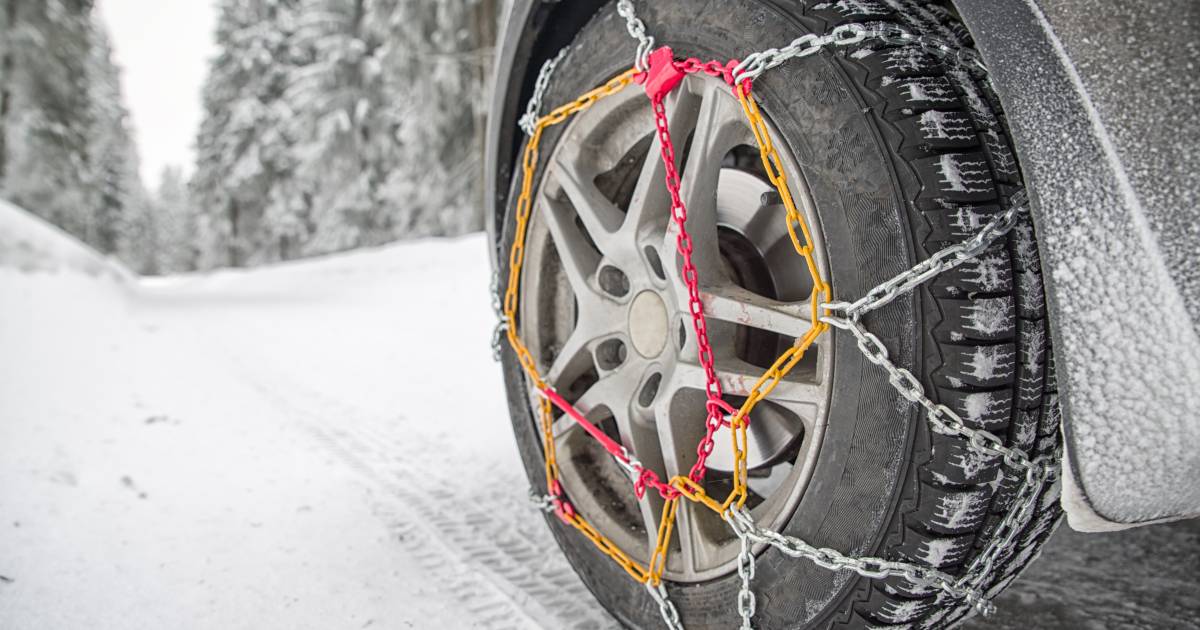In a number of European countries it is mandatory to have snow chains in the car as standard, even if you are driving on winter tires. Cars equipped with snow chains reach top speeds of 50 kilometers per hour across Europe.
In some European countries it is necessary to use snow chains on certain roads. This is indicated in time by a round blue marker with a tire symbol with a snow chain. Failure to comply with this may lead to problems when claiming damages from your insurance.
Reverse burden of proof
In addition, drivers who drive without snow chains are often held liable in the event of damage. The reverse burden of proof applies here. This means that you will be blamed and you must prove your innocence yourself. You must be able to prove that the accident would also have happened if you had driven with snow chains. In practice, this is often an impossible task.
Germany: In mountainous areas, snow chains may be mandatory in winter conditions if indicated with a sign. If there is no sign, but the road is (to a large extent) covered with snow or ice, snow chains are allowed. It is forbidden if there is no ice or snow on the road.
France: A new traffic light with a red border and a black winter tire and snow chains on it indicates that you are entering an area where you must drive on winter tires during the winter period or have snow chains in the trunk. If you come across a round blue sign with a white car tire with a snow chain, it is only necessary to install snow chains if the text on the lower sign reads: Assignment chains (snow chains required) shown.
Italia: The use of these strings is indicated by tags. Within the Aosta Valley, vehicle chains are required from October 15th to April 30th. In South Tyrol on the A22 motorway between Brenner, Affi and Bozen, you must be on board from November 15 to April 15 if your car is not on winter tyres. Compliance is indicated by a green or blue mark with the text obbligo di pneumatici invernali o catene a bordeaux (Winter tires or snow chains on board are mandatory).
Croatia: In Croatia it is mandatory to have snow chains in the car if you are not driving with winter tyres. The use of chains (or winter tires) is also mandatory if there is black ice and more than five centimeters of snow.
Holland: In the Netherlands, it is strictly forbidden to drive with snow chains. Even if there is a thick layer of snow. In the Netherlands, so-called snow socks are allowed without steel chains, just as in Germany and France, for example. These plastic snow chains must comply with European standard EN 16662-1.
NorwayThe use of snow chains is mandatory if conditions require it on vehicles with summer tyres. With a gross weight of more than 3,500 kg, it is always necessary to have snow chains in the car or to drive on winter tires.
Austria: Within Austria, the use of snow chains is only compulsory on certain roads in certain situations. This is indicated by tags. These chains are only allowed to be used if it is necessary and the road surface is not damaged. Snow chains must comply with the Austrian ÖNORM V5117 standard. Equivalent metal snow chains from other EU countries may also be used. Suitable snow chains can be rented at major border crossings. Snow socks and plastic snow chains are not permitted.
Slovenia: In Slovenia, it is mandatory to have these chains in the car from November 15 to March 15, provided that no winter tires with a tread depth of at least 3 mm are fitted.
Slovakia: During the winter months, it is necessary in Slovakia to have snow chains fitted in the car. Its use is mandatory if signs indicate.
Czech Republic: In the Czech Republic, it is also mandatory to have snow chains on your vehicle during the winter months. The use of snow chains is mandatory if indicated by a round blue sign with a white car tire with a snow chain on it. If there is a bottom panel with text pri souvislé snehové vrstve (in the case of continuous snow cover), they may be installed only when the road is completely or almost completely covered with snow or ice.
SwedenIn Sweden, snow chains are allowed, but not mandatory.
Switzerland: The use of snow chains is mandatory if indicated by a blue circular road sign showing a car tire with a snow chain. Therefore it is recommended to bring snow chains. Sometimes a traffic light has an underscore with the text 4×4 take it out. If so, four-wheel drive vehicles are allowed to drive without snow chains.
For a comprehensive, up-to-date overview of snow chain requirements for each vacation country click here.
Unlimited free access to Showbytes? Which can!
Log in or create an account and never miss a thing from the stars.

“Creator. Award-winning problem solver. Music evangelist. Incurable introvert.”







More Stories
British military spy satellite launched – Business AM
Alarming decline in the Caspian Sea
Lithuania begins construction of military base for German forces